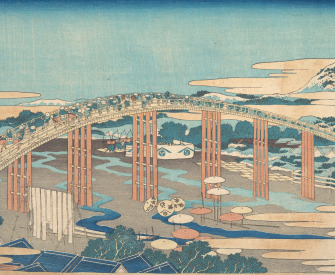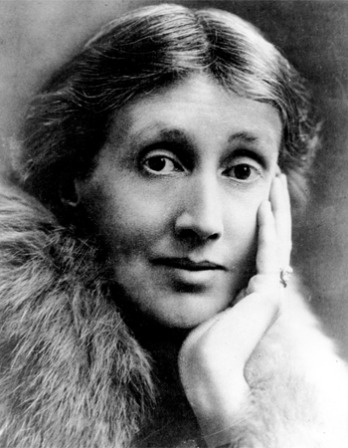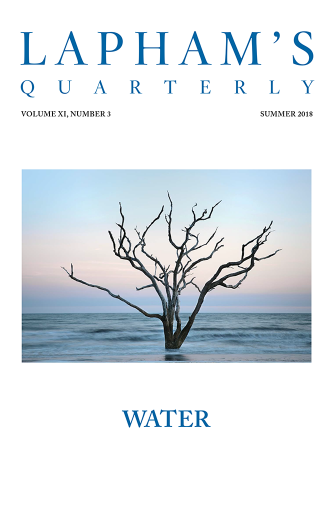Journeys, like artists, are born and not made. A thousand differing circumstances contribute to them, few of them willed or determined by the will—whatever we may think.
—Lawrence Durrell, 1957A Little Travel Is a Dangerous Thing
The first adventurers in the Age of Discovery didn’t just make progress into uncharted waters, they invented the very idea of progress.
By D. Graham Burnett
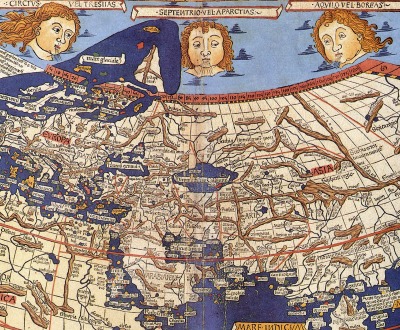
A map of the world constructed after the coordinates in Ptolemy's Geography, engraved by Johannes Schnitzer, 1482.
In the spring of 1571, a cassocked Spanish Jesuit named José de Acosta, who hailed from the arid plains of Medina del Campo, found himself testing his sea legs on the deck of an oaken caravel lurching about in the mid-Atlantic. The mother church had ordered him to distant Peru, and so he bowed his head and went. But as his balky vessel blew across the equator, he looked up, spotted a pasty sun set high in the sky, knitted his brow, shivered a little, and burst into peels of philosophical laughter—the sort of kick-the-chair-out-from-under-the-teacher belly laugh that Nietzsche would have loved. I’ll let Father Acosta explain:
Here is what happened to me when I crossed over to the Indies: Having read what the poets and philosophers write of the “burning zone,” I persuaded myself that coming to the equatorial region I should perish from the violence of the terrible heat. But it fell out otherwise, for when I passed over—the sun being directly overhead, and it being March—I was so incredibly cold that I was forced to go out into the sun to warm myself. What could I do then but laugh at Aristotle and his philosophy, seeing that in that place and in the season when, according to his principles, everything should have been scorched with fire, my companions and I were freezing cold?
Those long-faced men who crammed theology in the stony cloisters of Toledo seldom found themselves busting a gut at the foolishness of Aristotle (known simply in those days as “The Philosopher”), whose metaphysics had become the basic architecture of Catholic doctrine. In Acosta’s chortle, then, one feels the earth move. For a moment the vaulting edifice of classical learning teeters, and with it the whole theory of knowledge in the Renaissance—that hallowed notion that the deepest truths lay in the deepest recesses of antiquity, that one went back to the old books to find the right answers. Acosta, plucked up from the half-light of his cell and lashed to the mast of the age of discovery, found himself watching his cherished textual authorities wash away in the wake. A little travel is a dangerous thing.
And the sixteenth century saw a lot of travel. Right about the same time that Acosta was kissing Aristotle on both cheeks and chucking him overboard, a short Flemish mapmaker from Rupelmonde named Gerardus Mercator (né Kremer, son of a shoemaker) was doing much the same for Ptolemy, the towering cosmographic authority of antiquity. By the 1570s Ptolemy’s famous chart of the known world—which hailed from the second century and saw publication by enthusiastic Renaissance scholars shortly before the voyages of Columbus—had been for nearly a hundred years the base map upon which European explorers had plotted their expanding sense of the globe. While Ptolemy’s original chart emphasized a homey wedge of the Mediterranean lands (known in Greek as the oikoumene, meaning roughly “the inhabited world”), the Portuguese expeditions around the horn of Africa and the transatlantic passages of the Spaniards forced cartographers to stretch this tidy frame bit by bit, adding on awkwardly at the edges. It proved an unwieldy business. And indeed, by the time Mercator set to the task of compiling his Atlas (named, of course, after the Titan of Greek mythology who bore the earth on his shoulders), the idea of trying to keep Ptolemy au courant had given up the ghost. Rather than beef up the original Ptolemaic plat with more than a century of new geographical discoveries, the Flemish mapmaker adopted a radically new strategy: print the original Ptolemaic maps in their original form as a sort of standalone cartographic appendix, with a headnote saying something like, “Here, want to see what the world looked like to some Greek guy more than a thousand years ago? Check this stuff out. But should you want to see what the world really looks like, let me direct you to my latest publications…”
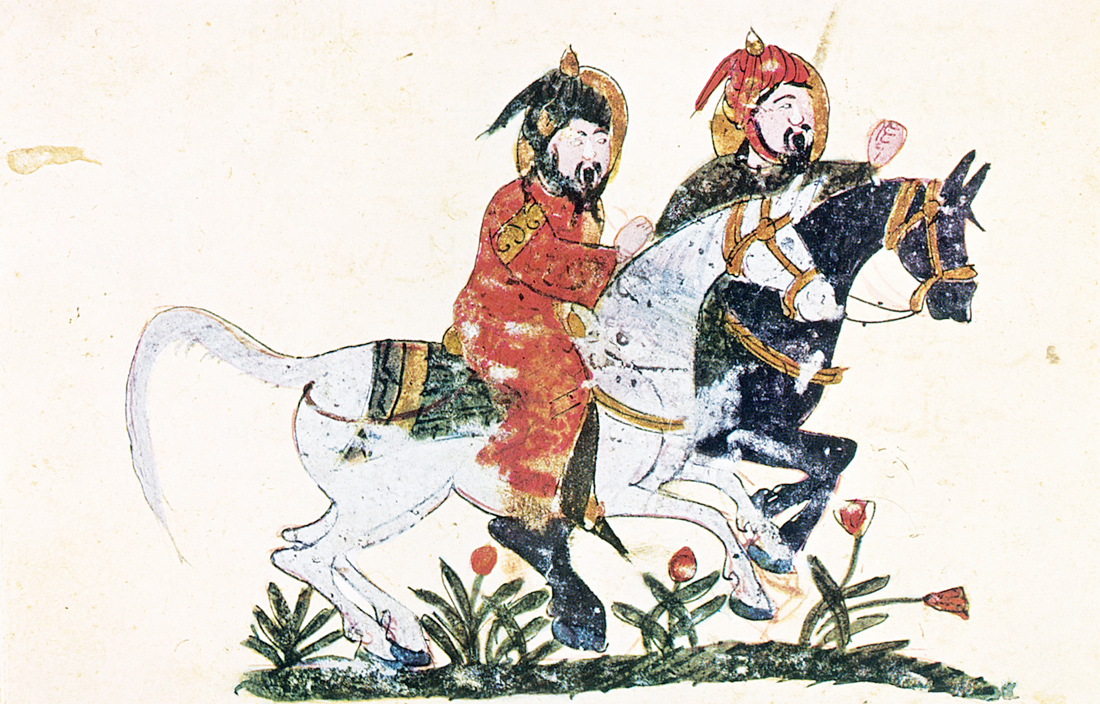
Two horsemen, illumination by Ibn al-Ahnaf from the Book of Farriery, Baghdad, c. 1209. Topkapi Palace Museum, Istanbul, Turkey.
No more playing catchup with the ancients; they had been surpassed. One could for the first time put them in their place: a place called “history.” Call it the discovery of the past. More than one twentieth-century scholar looking at this moment has been tempted to call it the “birth of modernity,” and even if this claim seems a little too vast, you still might find yourself wondering: if the traveling men of the age of discovery had not, by the end of the sixteenth century, relegated Ptolemy’s Geography to that newly created waste bin known as history, would European savants have been ready to bin the old Greek’s Astronomy in the century to come? The “Ptolemaic universe,” of course, was that earth-centered cosmos, the unmaking of which would be central to the Scientific Revolution.
By 1600 the surpassing of the past was well and truly begun, and it was the travelers who had been the first to step beyond tradition. Those first adventurers—the wind in their faces, their eyes on the horizon—didn’t just make progress into the western Atlantic; they did something much grander than that. They invented the very idea of progress.
A proper philosophy for all this followed close behind. In the early seventeenth century, the cantankerous Jacobean prosecutor Francis Bacon explicitly set himself the task of designing a whole new epistemology suitable for a world that had left Aristotle and Ptolemy in the dust of the Old World. He chose a paradigmatic image of world travel as the escutcheon for his new philosophy. The title page of his magnum opus The Great Instauration depicts an intrepid ship sailing through the Pillars of Hercules, those mythical gates of the Greek cosmos—and, more prosaically, the very unmythical Strait of Gibraltar, that narrow passage out of the Mediterranean and into the vast reaches of a New World. Below, a Latinate motto snipped from the Book of Daniel glossed the scene: “Many shall go to and fro, and knowledge shall increase.” The Hebraic sense of the line is obscure, but the shifty, courtly Bacon was here intent on converting a little prophesy from the Babylonian captivity into nothing less than a program for the future of science and politics, an exhortation to his contemporaries to attack the world as a problem of knowledge, not a theater for divine contemplation.
If men like Acosta and Mercator dealt death blows to the idea that all learning lay in the past, Bacon formalized the corollary: discovering powerful truths demanded going beyond the boundaries. Here was a veritable theory of knowledge as transgression, a notion that would have shocked his pious predecessors of the Middle Ages. For them, the entanglement of knowing and transgression was called the “fall of man,” which was about as far as you could get from the high road to glory.
But by the 1620s, when Bacon pitched himself to King James as a new Aristotle (the better to tutor the king to become a new Alexander the Great), transgression was well on its way to becoming standard operating procedure. Not for nothing did Bacon take as his own personal motto a potent inversion of the notorious nec plus ultra (“No Farther!”), said to have been graven on the old Pillars of Hercules: scotching that little “nec,” Bacon marched under a new flag, plus ultra! (“Yet Farther!”) It was the banner of the explorers, and Bacon hoisted it over the world of learning. His vision for the sciences—progressive, transgressive, cumulative, worldly, powerful—was a vision born in an elaborate metaphor likening the pursuit of knowledge to geographical exploration. And it was the vision that gave birth to what we know as the modern world. We are all Baconians now, believing as we do that new truths lie ahead. The horizon line of the traveler lives in our minds as the limits of the known.
Bacon literalized this revolutionary notion in one of the strangest texts of the early seventeenth century, The New Atlantis, a fantastic tale of sea adventure that he larded with his utopian project to invent a globe-spanning society of techno-scientific masters. Only Hollywood could do the story justice: A shipload of adventurers, blown off course in the Pacific, make landfall on a heretofore unknown island. Ostensibly prepared to encounter cannibal savages or wild beasts, the famished sailors discover instead a thriving polyglot civilization of the greatest sophistication, where they are ultimately welcomed with open arms and much didactic speechifying. Inducted into the mysteries of all this wealth and happiness, the seamen learn that the New Atlantians maintain a secret globe-spanning network of research vessels, forever plying the world’s oceans incognito and stopping at every port and foreign shore. These pervasive expeditions—outfitted with all manner of instrument and tool—cull the finest products from every continent, collect rarities, and make observations, returning to their island home with invaluable spoils. A pirate paradise, you say? Nay, nay. Bacon puts on the lips of his heroes a veritable disdain for mere lucre: wherever they go they are after knowledge. As one of them puts it boldly to his benighted guests, “But thus you see we maintain a trade, not for gold, silver, or jewels; nor for silks; nor for spices; nor any other commodity of matter, but only for God’s first creature, which was light: to have light (I say) of the growth of all parts of the world.”
At the summit of the island stands the centerpiece of the fantasy, a sprawling complex of laboratories where the most esteemed and brilliant of the inhabitants work eternally on a host of challenging projects, all aimed at the mastery of nature and the improvement of the human condition: these adepts labor to stay on top of the vast resources that pour into the country from its expeditionary forces, and they conduct experiments aimed at breeding new species, extending life, improving health, and creating novel forms of entertainment and pleasure.
One would call it science fiction, except science itself barely existed. And anyway, how can it be a “fiction,” when it turned out to serve as a blueprint for the creation of the first true scientific research community? Just a few decades later, a coterie of Bacon’s disciples, keen to realize the vision of the master, founded the Royal Society of London under the mantle of the old fantasist (who had since died, quite possibly cut down by an experiment with a frozen chicken gone terribly wrong). It is no wonder that one of the very first projects undertaken by this august new institution was the drafting of a set of “Directions for Sea Men, Bound for Far Voyages,” instructing them on the kinds of observations that would be of benefit to the savants.
For much of the next two hundred years, the history of science and the history of geopolitics were together the history of trying to get a grasp on the globe. Geographical exploration was the “big science” of the eighteenth and nineteenth centuries, and European nations vied to promote the forms of knowledge-seeking travel that extended (either directly or indirectly) the command and control of expanding colonial power. New metropolitan institutions arose to study, sort, and archive the endless torrent of information and specimens that gradually made the western end of the Eurasian landmass feel like the center of the world, rather than merely the chilly and uncivilized hinterlands of the glorious Near East. What is surprising is just how far the whole thing went: by the beginning of the twentieth century, Europeans and their creolized descendants would claim territorial sovereignty over about 85 percent of the surface of the earth. This was the long work of a very powerful kind of travel.
Here’s what it looked like at ground level:
This afternoon we set up the Observatory and took the Astronomical Quadrant ashore for the first time, together with some other Instruments, the Fort being now finished, and made as Tenable as the Time, Nature and situation of the ground, and materials we had to work upon would admit of. The north and south parts consisted of a Bank of earth four and a half feet high on the inside, and a Ditch without, ten feet broad and six feet deep.
The text is the entry in Captain James Cook’s diary for May 1, 1769, he and his men having spent two weeks getting the lay of the land at a place they called “George’s Island,” otherwise known as Tahiti. His mission? It depends which envelope you open. The formal commission called for Cook to steer the good ship Endeavour halfway around the world in the service of science, since early June of that year would bring a great astronomical rarity: the transit of the planet Venus directly between the earth and the sun. The proper measurements of this phenomenon, undertaken from just the right places on the globe, promised to afford astronomers the raw data necessary to work out the exact size of the solar system. The glory of the thing! The purity! A heady expedition to the South Seas in pursuit of light!
But then there were those other instructions, tucked in a sealed envelope that Cook was not to open until well out to sea: these rather tinctured that glowing light of rational inquiry with a leering glint of imperial lucre, as these secret orders instructed him, shortly after attending to the transit observations, to comb the southern Pacific on the lookout for Terra Australis, which, should he come upon it, was to be adorned instantly with a Union Jack, the better to forestall French ambitions and outflank the meddlesome Dutch.
And so it went. Geographical exploration was ever thus: a little light, a little lucre; a little international cooperation, a little patriotic espionage; a little science, a little hegemony. To these ends Cook packed off for the verge of the earth with a trunk of flags, a team of well-equipped stargazers, and a fully portable astronomical observatory suitable for tossing up on distant beaches.
It is a beguiling contraption—the sort of thing that Bacon would have loved. A rotating roof opened a winking slit to the sky, the lacquered canvas shed the tropical rains, and a special frame permitted the explorer to square his astronomical clock and telescope on even the rockiest and most uneven of savage strands. It was both a practical redoubt for the itinerant geographical explorer (who could extend and refine his map of the world by means of celestial observations made from within this cozy womb), even as it was a portmanteau symbol of European science gone global. After all, the observatory was the space of metropolitan rationality par excellence, and with this handy mini version, which packed down to a six-foot-long case, the Enlightenment explorer could carry the carapace of reason wherever he went. No shore so wild that it mightn’t be transformed—by means of a day’s labor in this very peculiar tent—into another Cartesian coordinate in the intelligible sphere.
One wonders what the natives made of all the fuss, particularly in view of the fact that this collapsible temple to the gods of precision came ashore under a heavy covering fire. Cook’s “Fort Venus” featured more than just perimeter berms—ever the military man, he elected to fortify his observatory with a pair of four-pounder cannons and six swivel guns, along with forty-five armed men. Light, lucre, and violence: the threefold doctrine of imperial travel. Indeed, a slight misunderstanding when the English emplacement was first being laid out led to quick blood: a young Tahitian man shot down while displaying a hazy conception of private property. One could never be too careful. Captain Cook ended his journal entry for the first of May with a satisfied grunt: “I now thought myself perfectly secure from anything these people could attempt.”
Or so he thought. As it happened, that very night one of the locals succeeded in making off with the holy of holies from his collapsible shrine, the astronomical quadrant itself—much to the consternation of all. A little negotiation, a hostage or two, much gesticulation, an upcountry foray by a small contingent of men at arms, and the irreplaceable brass device reappeared, still in its case, and not much the worse for wear. That global roadshow called Enlightenment science could pull up stakes for its next gig.
The man who brought the quadrant back from the bush, a dashing young gentleman named Joseph Banks, would go on to be one of the most important figures in the history of learned travel, sitting as he did for the next half century squarely at the nexus of voyaging, power, and progressive knowledge. Banks served both as the president of the Royal Society and as the semiofficial director of British overseas exploits in a crucial era of imperial expansion. An impresario of exploration, a fixer and commissioner, he brokered essential links between government policy, private enterprise, and military might. At the peak of his power he theorized global domination as something like estate management on a planetary scale. Knowledge of nature, as he saw it, amounted to the right to rule—an analysis that did wonders for the social status of the sciences in the nineteenth and twentieth centuries. If a little travel is a dangerous thing, Banks—for whom the world was essentially a vast web of travelers on whose reports he could continually draw in the service of science and the British Empire—was a very dangerous man. Persuaded deeply, like his philosophical peers across Europe, that as one went out from Paris or London one traveled “back in time” (and visited primitive folk), Banks set to work structuring the globe as the expansive rural estate of metropolitan industry. What was India but a spacious cotton farm supplying the mills of Manchester? And China? A singularly expansive plantation for tea.
Estate management came to him naturally, in that, while still in the very bud of youth, he inherited a landed fortune so huge that he could count himself among the very richest men in England. And from the comfort of his country seat, this agrarian plutocrat looked out on a planet that wanted only the attentions of a strong-handed scientific improver to yield greater fruit (and, in turn, higher rents). His gentry-farmer energies turned him to botany and entomology and the like, and it was as an amateur student of Linnaean natural history that he arranged himself passage on Cook’s first voyage. Why? “Every blockhead,” he announced, makes the Grand Tour. “My Grand Tour shall be one round the whole globe.”
Truth is, it was a bit like the space tourism of our own day. Banks paid his way on the government-sponsored voyage, and paid handsomely—indeed, laid out what would now be millions for his passage, a sum that included very considerable expenditures to refit the vessel, the better to secure the comfort of his quarters (and that of his servants). Poor Captain Cook, a workingman’s son who rose through the ranks piloting unglamorous coasting vessels, at times found himself at the mercy of his passenger, who was a perfect toff—there was, needless to say, no giving him orders.
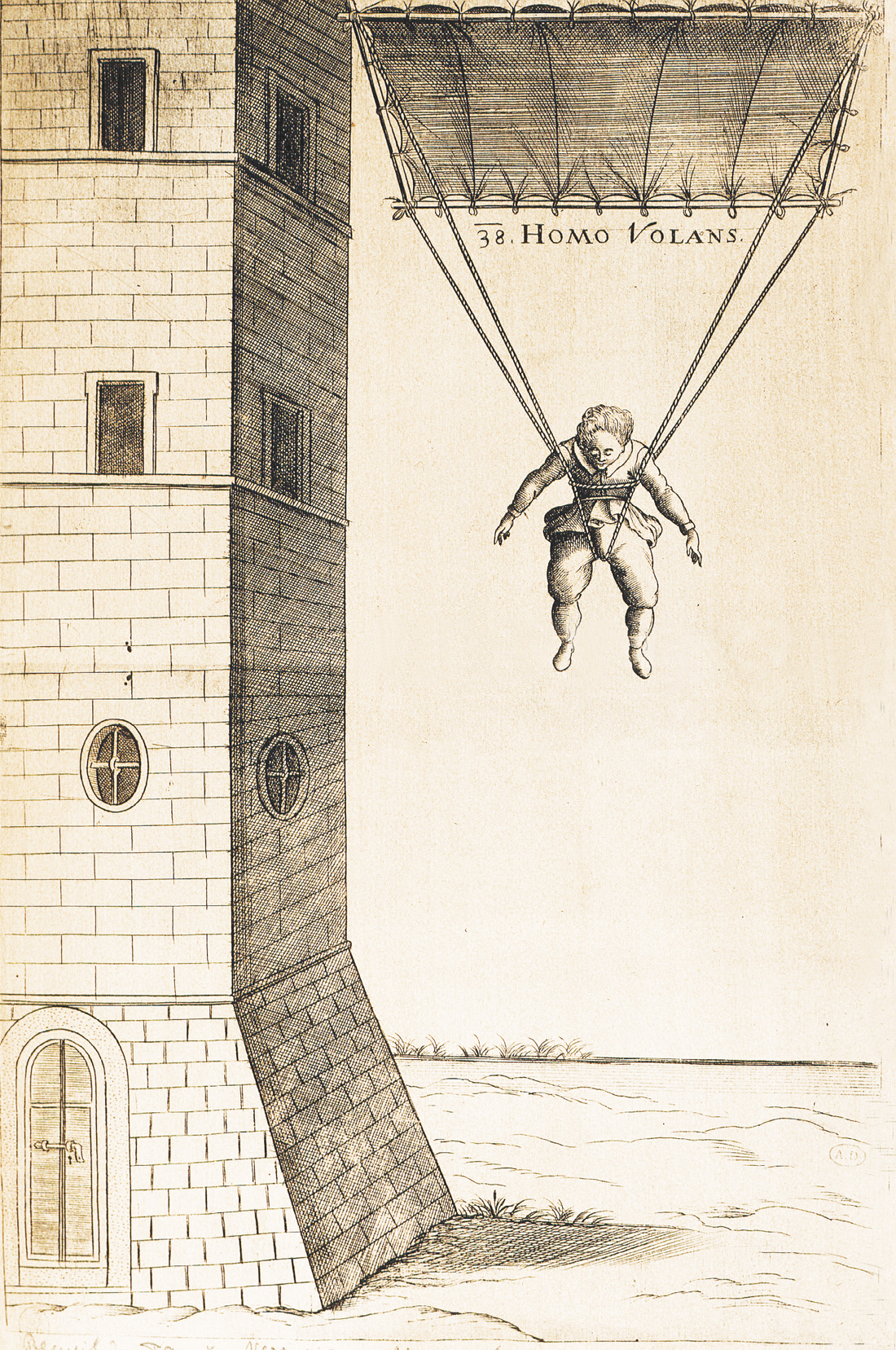
Engraving of Croatian mathematician Faust Vrančić jumping from a tower with a parachute, Italy, 1617.
Which could be trouble, since he had his own interests. At heart, Cook was a maker of charts and as such he represented one of the two fundamental branches of European travel knowledge: the project of cartographic mapping, that astronomical and geometrical effort to trace the armature of the earth. But Banks represented the other side of that same world-spanning program of global mastery: he was a collector-naturalist, one in the countless hoards of European travelers intent on collectively amassing a total inventory of the plants, animals, and rocks of the planet. If Cook’s branch of global cartography is nicely symbolized by the portable observatory, Banks’ branch is epitomized by a lovely little trinket developed by one of his assistants, Daniel Solander: the so-called Solander Case, a book-like box for gathering pressed leaves and other gleanings from distant jungles. Here was a way to assemble the “Book of Nature” leaf by leaf and place it on a shelf in one’s study—Banks much liked that feeling of having the world at his fingertips. Maps offered it one way, and the botanical gardens and museums of the metropolis offered it in another. Though Cook and Banks could squabble over the best way to spend time on the voyage (Banks wanted to stay ashore and get plants; Cook wanted to make a few observations and keep moving), their joint voyage can be thought of as a kind of crossing point for their two traditions. Between them over three hundred years of traveling cartographers and traveling collectors combined to create a totalizing view of what there was in the world and exactly where it could be found. It was an immensely powerful instrument for thinking about nature. A young Charles Darwin (who benefited from the informal networks Banks cultivated between the Admiralty and the natural sciences) mused on the theory of evolution only after pondering why some animals were found in some places and not others, but his observations would have been impossible without the elaborate maps and collections realized by his globetrotting predecessors. And not all the payoffs were merely, shall we say, conceptual. In that totalizing view of the what and the where, the traveling naturalists assembled the administrative heart of European colonialism, which came with a sense that the world could be managed.
How? Well, Banks himself worked for years to rearrange the natural world in the interest of English slave plantations in the Caribbean: he figured the pervasive problems with malnutrition in the cane fields could be rectified by transplanting breadfruit trees from Tahiti—the fruit of paradise, to feed the mouths in hell. And while the first effort to move the trees (sailing on the HMS Bounty under the command of one Captain William Bligh) met an unfortunate end in a notorious mutiny, Banks persevered and eventually got his way. Nor was that all. For much of the nineteenth and twentieth centuries, scientific advisers to private companies and governments pushed the plants and animals of the global inventory around on the maps realized in the project of global cartography—it was the chess game of modern man-made ecologies, otherwise known as “development.” Sugar from Asia to the West Indies; rubber from Congo to Southeast Asia; cocoa from South America to West Africa; sago from Malaya to Singapore; cinchona from the Andes to South Asia—an endless global shuffle in pursuit of wealth and power. Paradoxically, the very idea of ecology was discovered in the process of violating the integrity of every ecosystem on earth. Plus Ultra.
Does travel still plant the seeds of revolution? Or has tourism effectively domesticated the roiling dangers of itinerant thinking? It is hard to say. But Plus Ultra can still pack a punch. One wonders if the Apollo 8 astronaut Frank Borman, catching sight of the earth-rise over the lunar horizon in late December of 1968, didn’t have an Acosta moment of his own. It was surely a sight worthy of a fearsome and philosophical laugh, since the project of violating the integrity of fragile ecosystems looked mighty stupid from the perspective of a set of human beings in one little spacecraft looking out at all those humans floating through the void on another. The picture of that blue marble, relayed back to its mesmerized citizens, played a critical role in driving home the idea that, ecologically speaking, we were in this together. Sometimes a long voyage changes everything.

